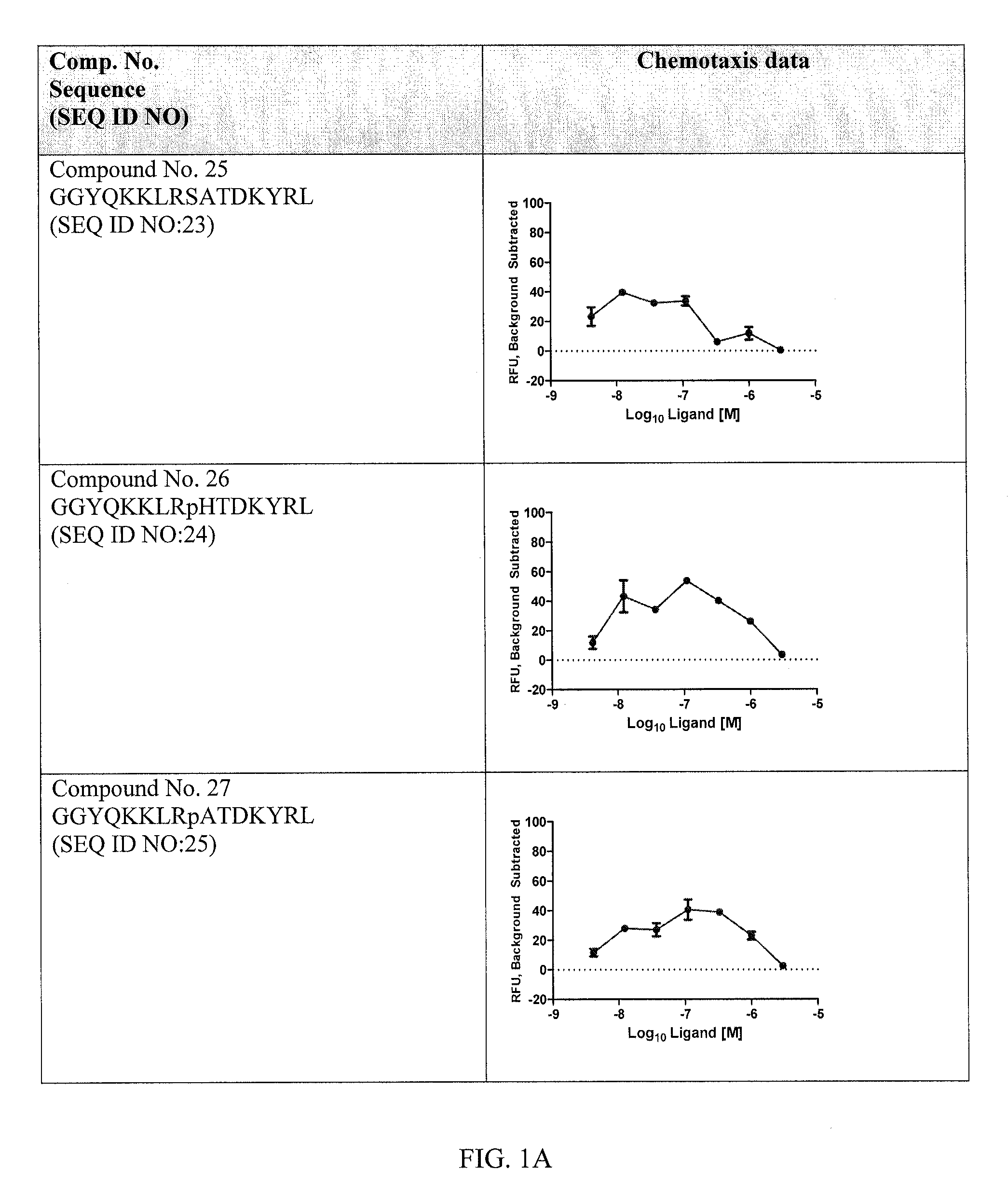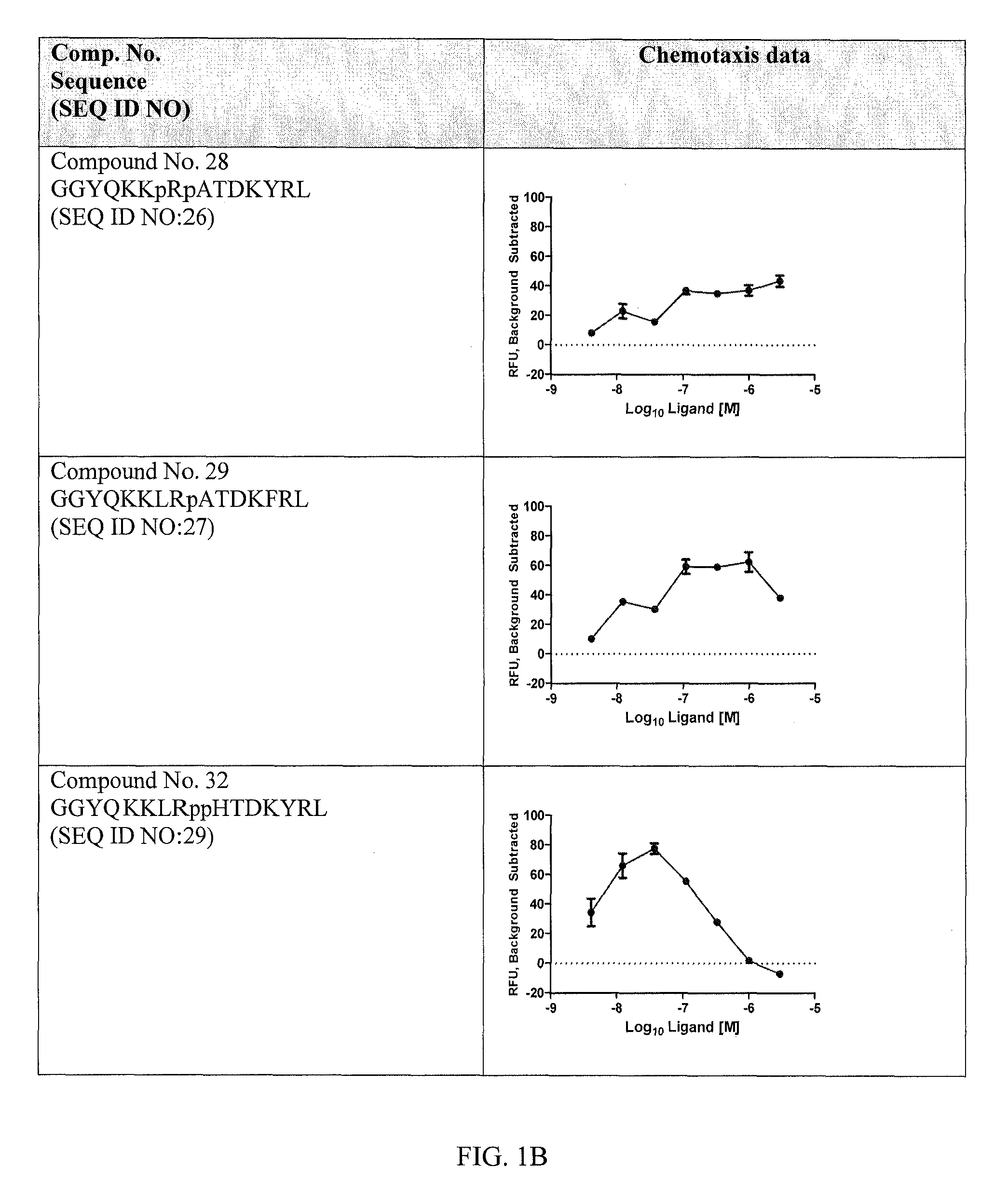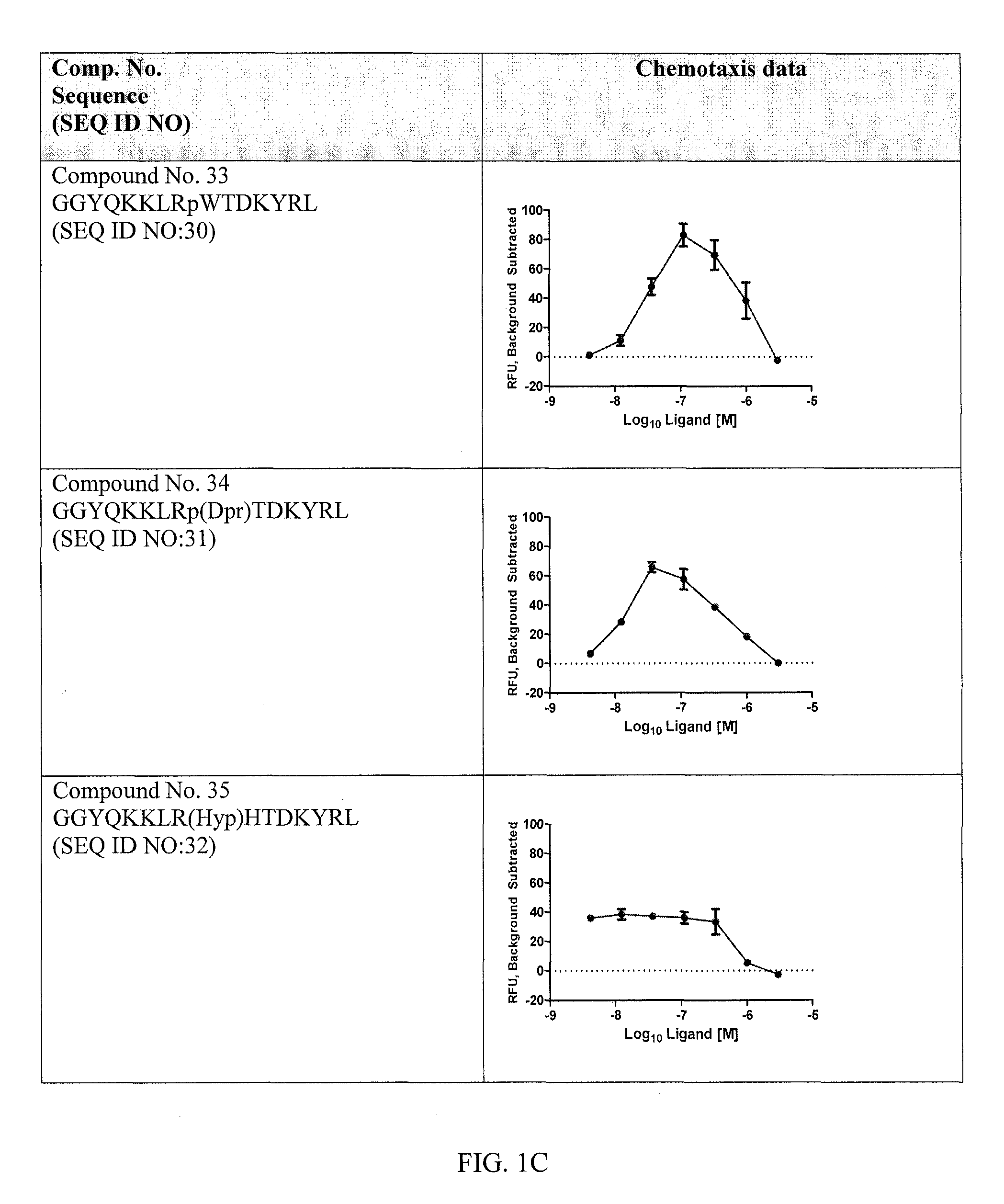CXCR4 receptor compounds
a receptor and cxcr4 technology, applied in the field of cxcr4 receptor compounds, to achieve the effects of increasing the homing or trafficking of stem cells, promoting wound healing, and reducing scarring at the wound
- Summary
- Abstract
- Description
- Claims
- Application Information
AI Technical Summary
Benefits of technology
Problems solved by technology
Method used
Image
Examples
first embodiment
[0090]In a first embodiment, L is a linking moiety bonded to P at an N-terminal nitrogen of an N-terminal amino acid residue selected from: C(O), C(S), S(O)2, N(R3)S*(O), N(R3)S*(O)2, N(R3)C*(O), N(R3)C*(S), OC*(O), OC*(S), SC*(O), SC*(S), C(═NH), or N(R3)C*(═NH) wherein L is bonded to P at the atom marked with an asterisk (*) and R3 is H, D, (C1-C6)alkyl, (C2-C6)alkenyl, (C2-C6)alkynyl, (C1-C6)alkoxy, (C3-C9)cycloalkyl, 5-10 membered heterocycloalkyl, aryl, aryloxy, heteroaryloxy, aralkyl, heteroaryl, or heteroaralkyl; wherein said alkyl, alkenyl, alkynyl, alkoxy, cycloalkyl, heterocycloalkyl, aryl, aryloxy, heteroaryloxy, aralkyl, heteroaryl, and are heteroaralkyl optionally and independently substituted.
[0091]In another specific embodiment, R3 is H or D.
[0092]In a further specific embodiment, L is selected from the group: C(O), S*(O)2, NHC*(O), NHC*(S) and OC*(O). In an even further specific embodiment, L is selected from C(O), S*(O)2 and OC*(O). In a most specific embodiment, L ...
second embodiment
[0458]In a second embodiment, the method is a method of treating cardiac tissue damage, bone injury, or ischemia or promoting wound healing, or reducing the formation of scarring or increasing homing or trafficking of stem cells in a subject in need thereof, comprising administering to the subject an effective amount of a compound of Formula A-1:
T-L-X5-X6-X7-X8-X9-X10-X11-X12-X13-X14-X15-X16-X17-X18-X19-X20-X21—R1;[0459]or a pharmaceutically acceptable salt thereof, wherein:[0460]L is a linking moiety selected from: C(O), C(S), S(O)2, N(R3)S*(O), N(R3)S*(O)2, N(R3)C*(O), N(R3)C*(S), OC*(O), OC*(S), SC*(O), SC*(S), C(═NH), and N(R3)C*(═NH); wherein L is bonded to P at the atom marked with an asterisk (*) and R3 is selected from: H, D, (C1-C6)alkyl, (C2-C6)alkenyl, (C2-C6)alkynyl, (C1-C6)alkoxy, (C3-C9)cycloalkyl, 5-10 membered heterocycloalkyl, aryl, aryloxy, heteroaryloxy, aralkyl, heteroaryl, and heteroaralkyl; wherein said alkyl, alkenyl, alkynyl, alkoxy, cycloalkyl, heterocycloal...
third embodiment
[0487]In a third embodiment, the method is a method of treating cardiac tissue damage, bone injury, or ischemia or promoting wound healing, or reducing the formation of scarring or increasing homing or trafficking of stem cells in a subject in need thereof, comprising administering to the subject an effective amount of a compound represented by Formula II:
T-L-X1-X2-X3-X4-X5-X6-X7-X8-X9-X10-X11-X12-X13-X14-X15-X16-X17-X18-X19-X20-X21-X22-X23-X24—R1;[0488]or a pharmaceutically acceptable salt thereof, wherein:[0489]L is a linking moiety selected from: C(S), S(O)2, N(R3)S*(O), N(R3)S*(O)2, N(R3)C*(O), N(R3)C*(S), OC*(O), OC*(S), SC*(O), SC*(S), C(═NH), and N(R3)C*(═NH); wherein L is bonded to P at the atom marked with an asterisk (*) and R3 is selected from: H, D, (C1-C6)alkyl, (C2-C6)alkenyl, (C2-C6)alkynyl, (C1-C6)alkoxy, (C3-C9)cycloalkyl, 5-10 membered heterocycloalkyl, aryl, aryloxy, heteroaryloxy, aralkyl, heteroaryl, and heteroaralkyl; wherein said alkyl, alkenyl, alkynyl, alkox...
PUM
| Property | Measurement | Unit |
|---|---|---|
| pH | aaaaa | aaaaa |
| period of time | aaaaa | aaaaa |
| period of time | aaaaa | aaaaa |
Abstract
Description
Claims
Application Information
 Login to View More
Login to View More - R&D
- Intellectual Property
- Life Sciences
- Materials
- Tech Scout
- Unparalleled Data Quality
- Higher Quality Content
- 60% Fewer Hallucinations
Browse by: Latest US Patents, China's latest patents, Technical Efficacy Thesaurus, Application Domain, Technology Topic, Popular Technical Reports.
© 2025 PatSnap. All rights reserved.Legal|Privacy policy|Modern Slavery Act Transparency Statement|Sitemap|About US| Contact US: help@patsnap.com



